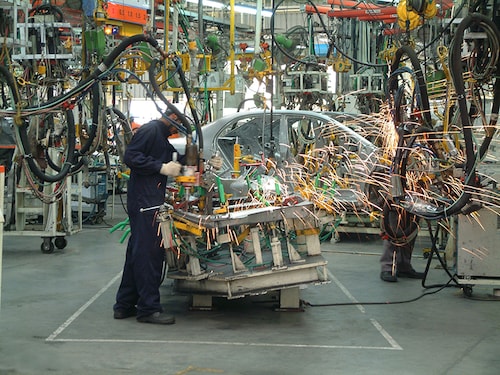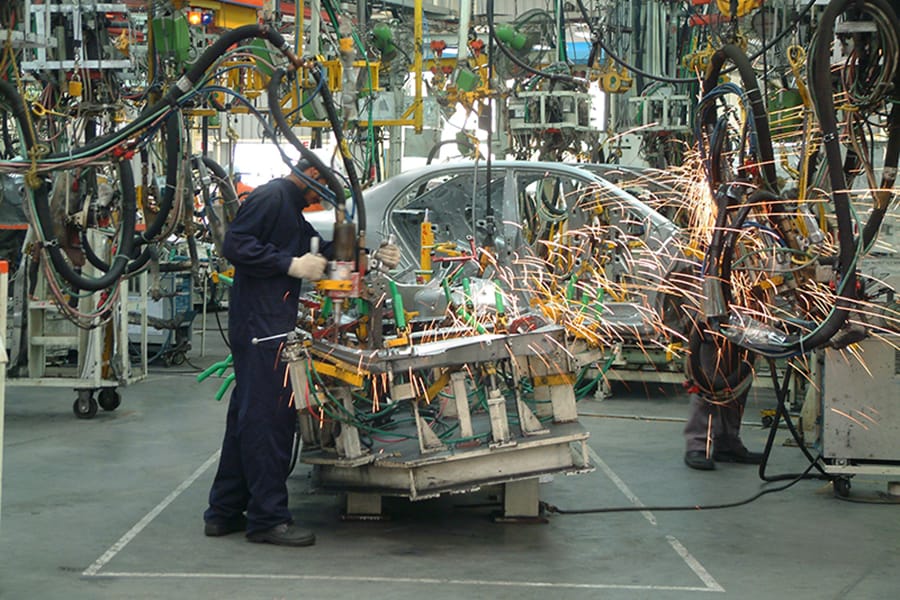Fast track 'Make-in-India' for turbocharging manufacturing growth
Seven key enablers for taking Make-in-India movement to the next orbit in this decade


 Image: Shutterstock[br] It is believed that once a nation begins to build knowledge, skill and capabilities necessary to manufacture goods, the path to prosperity begins. Recognizing the potential of manufacturing sector in contributing to innovation, job creation, enhancing export and providing cost effective technology for well-being, India created its National Manufacturing Policy (NMP) about a decade back. However, India in the recent past is passing through a turbulent phase in its manufacturing growth and it has become a cause of concern. India’s NMP objective of 25% share of GDP coming from manufacturing sector by 2022 has now pushed the asking rate to a high double-digit growth figure for the remaining years. Though the asking is a stretched one, still is not unachievable. The government’s ‘Make in India’ drive to become the hub of manufacturing has been viewed to be a critical step forward in achieving the desired manufacturing growth target. The recent quantum leap in the global ranking in ease-of-doing-business in India to 63rd position is expected to provide confidence to foreign investors to invest in a big way in India. However, a lot still needs to be done. Success of Make-in-India drive in the aerospace, defence, nuclear, precision-machine and other heavy industries can make a perceptible impact on the growth of manufacturing. Seven key enablers have been suggested for taking Make-in-India movement to the next orbit in this decade
Image: Shutterstock[br] It is believed that once a nation begins to build knowledge, skill and capabilities necessary to manufacture goods, the path to prosperity begins. Recognizing the potential of manufacturing sector in contributing to innovation, job creation, enhancing export and providing cost effective technology for well-being, India created its National Manufacturing Policy (NMP) about a decade back. However, India in the recent past is passing through a turbulent phase in its manufacturing growth and it has become a cause of concern. India’s NMP objective of 25% share of GDP coming from manufacturing sector by 2022 has now pushed the asking rate to a high double-digit growth figure for the remaining years. Though the asking is a stretched one, still is not unachievable. The government’s ‘Make in India’ drive to become the hub of manufacturing has been viewed to be a critical step forward in achieving the desired manufacturing growth target. The recent quantum leap in the global ranking in ease-of-doing-business in India to 63rd position is expected to provide confidence to foreign investors to invest in a big way in India. However, a lot still needs to be done. Success of Make-in-India drive in the aerospace, defence, nuclear, precision-machine and other heavy industries can make a perceptible impact on the growth of manufacturing. Seven key enablers have been suggested for taking Make-in-India movement to the next orbit in this decade
Enhance the formal labour quantum in the formal : informal labour-mix in Indian manufacturing industries to ensure long-term benefits. The three key reasons for the current burgeoning informal labour have been: low wages, flexibility in managing demand volatility and flexibility in retrenchment during labour-unrest periods. However, this is a myopic view of the employers. Unusually high proportion of informal labour force in the long-term, is likely to lead to lower productivity and inconsistent quality, lack of employer’s ownership for skill growth, unhealthy Industrial relation climate and it deters the economy of scales leading to inefficient small plants.
Recommendations from System dynamics simulation analysis has highlighted that every manufacturing plant should operate with the right (optimal) balance of formal and informal labour. Beyond a critical limit of informal labour-mix, the manufacturing output, in the long-run, is likely to decrease which is even intuitively appealing. Therefore, reforms in the current archaic labour laws are needed to this effect by providing the employers the flexibility in labour recruitment and lay-off. However, this ought to be transparent, performance driven and with a financial safety-net in the form of insurance for upskilling or retraining.
Attract large multinationals to India, especially in context to the prevailing strain in the US-China trade relationship. With the potential India possesses in terms of attractive labour costs, talented technical strength, large in-house market, fast improving ease-of-doing-business and good natural resources there exists a good opportunity. Showcasing Brand-India by industry leaders in global forums and thereby relocating the operations of a vital few large-firms to India can create a compelling growth story. Such projections also facilitate strategic-alliances in relevant areas of Artificial Intelligence, Additive technology, Cloud computing, Advance analytics, 3D and robotics in manufacturing for a solid foundation for tomorrow.
Building digital muscle in Indian industries for flexibility, agility and scalability to surge forward in the current VUCA economic world has become a necessity. Digital technologies and predictive analytics across the world are dramatically improving the operational models. Data driven manufacturing is improving the high-value asset utilization. The digitized value-chain is making customer interactions more productive, improving service levels and inventory-turns many folds. This will call for building digital competencies for the industries through leaders with business and digital acumen and by having capable data scientists and business analysts. The need is for incentivizing the adoption of digital technologies to ensure manufacturing sector remains globally competitive.
Push the growth of Machine tool industry (MTI) as it is a strategic industry and plays a key role in the growth of the economy through its multiplier effect. It determines competitiveness of the strategic industry sectors – Automotive, Defense, Aerospace, Nuclear, Railways and Consumer goods. A sound MTI takes the nation’s precision technology capabilities to the next level and supports capabilities of manufacturing industries. With India contributing a meagre 0.8% to global machine-tools production and China, Germany and Japan together contributing to nearly 61%, there exists a huge opportunity. India has the favourable drivers for the MTI: Make-in-India drive by the Indian government, strong support of foundry & castings industry, availability of raw material, cheap labour and skilled technical manpower. However, areas needing focus are: technical infrastructure to meet the global standards, indigenous R&D and availability of critical mechanical / electronic parts, advanced metallurgical processes / material for CNC, high precision and High speed machines.
Accelerate the Circular economy drive to manage the growing material consumption and depleting natural resource. Demographic changes and customer’s lifestyle transformation are likely to lead to scarcity of material which would soon adversely impact manufacturing growth. Circular economy seeks to eliminate all kind of wastes in market. The widely used linear business-model of ‘mine-refine-shape-assemble-use-discard’ ends up in waste generation is now globally being replaced by the circular model of ‘mine-refine-shape-assemble-use-collect-reprocess-reuse’ using the widely discussed 6R approach as its backbone. For 6R approach to accelerate recollection of end-of-life products, redesign products for improved reverse supply chain, engage the informal MSME effectively, use digital technology for productive product seller and consumer interaction would need focus. A quick design and implementation of a comprehensive circular economy policy has thus become inevitable.
Industry-Educational Institute-Government engagement continues to be an area of concern. Industry needs talented manpower, while a large junk of graduates is without jobs - what a paradox? Great Universities aligned to the need of the industry have to be created. Large size Universities with multidiscipline coupled with Center-of-excellence in technical institutes can result into high quality and relevant research outputs. Government funding is a critical factor for relevant research in Universities. Large industries will have to own up one or few Universities to intrinsically contribute to their development and employability. Industries will also have to play a major role with the government in creating/ upgrading relevant apprentice schools to get skilled workers deliver from day-one.
Agricultural sector growth can become an accelerator to manufacturing growth. Approximately 60% of the rural population of India is engaged in agriculture which is needing reforms to ensure their earnings get doubled. Affordable technology in cold-chain and world-class food processing plants can create wonders. India has the potential to export processed agricultural products. Once the prosperity of Indian farmers (60% population) happens a healthy manufacturing growth will happen.
In summary, if India has to achieve its manufacturing sector targets in the next few years it will have to quickly change gears in the seven areas: reform in labour laws, attract large multinationals, enhance its digital muscle, incentivize machine tool industries, accelerate circular economy, reform the education value-chain keeping industry as the key stakeholder and bring major policy and technological reforms in the agriculture sector.
By Dr. Ravindra Ojha, Professor, Operations, Great Lakes Institute of Management, Gurgaon
First Published: Mar 16, 2020, 11:41
Subscribe Now